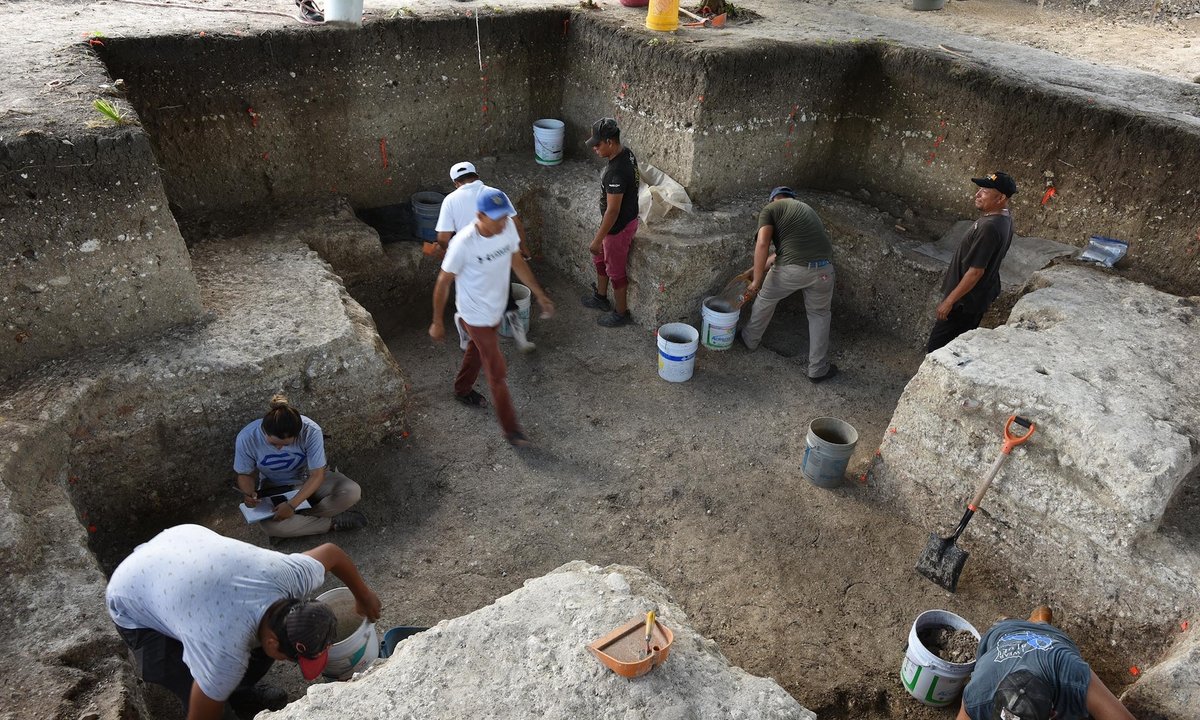
"A vast, 3,000-year-old earthwork hidden in the jungle of southern Mexico may represent one of the earliest known attempts to create a "cosmogram", a map of the cosmos in monumental form, according to a study recently published in Science Advances. Using airborne laser scanning and on-the-ground excavations, archaeologists identified the site known as Aguada Fénix as a massive ceremonial complex aligned to the movement of the sun and laid out along cardinal directions. The research team, led by Takeshi Inomata of the University of Arizona, used Light Detection and Ranging (Lidar) to penetrate the forest canopy in the state of Tabasco. Their data show an immense rectangular plateau estimated to have been built between 1050BC and 700BC."
"The complex measures around 9km by 7.5km and is surrounded by canals, causeways and corridors arranged in a cross-shaped pattern. Excavations at the central plaza uncovered jade and greenstone ornaments, pigments and ceramics placed in seemingly deliberate configurations. One jade carving depicts a female figure in childbirth, a symbol of rebirth, further suggesting that this complex was used for community gatherings."
"The alignment of the Aguada Fénix site corresponds to specific sunrise points that mark a 260-day ritual calendar later used by the Maya and Aztecs. Although a nearby lake may have supplied water to the canals, the researchers found no evidence of irrigation, indicating that the system's function was symbolic rather than practical. The layout of the site's central plaza allowed for solar observations that marked key points in this cycle, including solstices, equinoxes and other horizon events."
Aguada Fénix is a massive rectangular plateau in Tabasco, southern Mexico, built between 1050 BC and 700 BC. Airborne LiDAR surveys and on-the-ground excavations revealed a ceremonial complex measuring about 9 km by 7.5 km. The site is surrounded by canals, causeways and corridors laid out in a cross-shaped, cardinal alignment corresponding to solar horizon points. The central plaza contained jade and greenstone ornaments, pigments and ceramics, including a jade carving of a woman in childbirth. Canal evidence suggests symbolic water management rather than irrigation. Solar alignments correspond to a 260-day ritual calendar and mark solstices, equinoxes and horizon events.
Read at The Art Newspaper - International art news and events
Unable to calculate read time
Collection
[
|
...
]